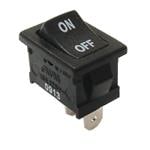 Aerospace & Defence
Aerospace & Defence
Diving deep into the search for life
Off the coast of Hawaii’s Big Island and more than 3,000 feet beneath the ocean surface lie the warm, bubbling springs of a volcano — a deep-sea location that may hold lessons for the search for extraterrestrial life. Here, NASA and its partners are blending ocean and space exploration, with a project called SUBSEA, short for Systematic Underwater Biogeochemical Science and Exploration Analog.
Who’s winning the latest global space race?
From the first satellites fired into orbit to man’s first triumphant step on the moon, the idea of space travel has sparked imaginations across the globe for decades. Now, the very same launch pad at the Kennedy Space Centre that once saw Apollo 11 soar for the moon recently launched a rocket to truly signal the next generation of space travel - Space X. Whereas once there were a handful of nations competing to reach the stars, now the...
VxWorks off to Mars on another NASA/JPL mission with InSight
Very recently on the 5th May, NASA’s Mars Interior Exploration using Seismic Investigations, Geodesy and Heat Transport (InSight) mission was launched using a United Launch Alliance (ULA) Atlas V 401 rocket from Vandenberg Air Force Base on a 300-million-mile trip to Mars to study for the first time what lies deep beneath the surface of the Red Planet. Guest blog written by Chip Downing.
Rugged relay designed for harsh inductive loads
TE Connectivity (TE) is pleased to announce the release of its new CII FC-335 series relay. Designed to manage harsh inductive, motor and lamp loads, this high-performance relay offers a rugged means of power switching in a range of aerospace, defence and marine applications. TE’s new relays are built to handle higher capacity loads than most comparable mid-range relays on the market, offering a 35A/28VDC resistive load rating.
Humming a tune from grand cosmic symphony
Researchers playing with a cloud of ultracold atoms uncovered behaviour that bears a striking resemblance to the universe in microcosm. Their work, which forges new connections between atomic physics and the sudden expansion of the early universe, will be published in Physical Review X and highlighted by Physics. "From the atomic physics perspective, the experiment is beautifully described by existing theory," says Stephen Eck...
Tackling the challenges of new space flights with traceable solutions
TT Electronics has announced the introduction of its New Space Electronics range. Higher volume satellite constellations in low Earth orbit are driving a requirement for increasingly cost effective components. The company's New Space Electronics offers a solution that delivers reduced screening but is fully traceable, with proven space grade heritage.
Satellite aims to discover thousands of nearby exoplanets
There are potentially thousands of planets that lie just outside our solar system — galactic neighbours that could be rocky worlds or more tenuous collections of gas and dust. Where are these closest exoplanets located? And which of them might we be able to probe for clues to their composition and even habitability? The Transiting Exoplanet Survey Satellite (TESS) will be the first to seek out these nearby worlds.
Purpose military lenses offer resistance to vibration
Internationally downward pressure on defence budgets has meant that the majority of military equipment contractors are looking for ways to provide fit for purpose products at competitive prices.
High precision for aerospace show
Harmonic Drive UK will be exhibiting its range of high precision gears at this year’s Farnborough International Airshow. The company will be on Stand 4026 in Hall 4 from 16th to 22nd July to advise aerospace manufacturers on the best gearing system for their product. More than 40 years ago, the first Harmonic Drive gears were sent into space during the Apollo 15 mission.
Researching telescope data for evidence of distant planets
As part of an effort to identify distant planets hospitable to life, NASA has established a crowdsourcing project in which volunteers search telescopic images for evidence of debris disks around stars, which are good indicators of exoplanets. Using the results of that project, researchers at MIT have now trained a machine-learning system to search for debris disks itself.







